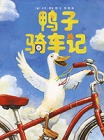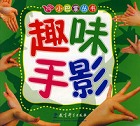金融英语辅导
I. History of Money
一、货币历史
Money's got a very colourful history, because a number of things have been used in the place of what we use as money. Feathers, shells, cloth ……salt in Roman times when the Roman soldiers were paid in salt and that's how we get the word salary, from the Latin sal for salt. 历史上的货币五花八门。古时候,羽毛、贝壳、布料甚至盐都曾是交换工具。古罗马士兵得到的军饷就是盐。盐这个词也是英文“工资”这个词的起源。拉丁文Sal的意思是盐,英文中工资Salary就是从它演变而来的。
And a number of tribes used cattle, which were useful because they were transportable. But they were quite bulky and you weren't always sure of the size of cattle you were going to get, so there was a problem there of quality. 还有一些部落以牲畜作为交换媒介。这很有用,因为牲畜可以运来运去。但是它们体积庞大,而且无法确切知道你将要得到的牲畜的大小,因此存在质量方面的问题。
In the ninth century in China we had paper money for the first time. It wasn't quite the paper money that we know, it was more like a piece of paper saying a promise to pay. 九世纪时在中国首次出现了纸币。这种纸币与我们现在使用的不同,更象是一种欠条。
And then in the seventh century we had money in the form of precious metal. There was always a problem of making sure that the coin that you got had enough precious metal in it to give it a value. When things got tough, you often found some civilisations were quite good at what they called sweating the money, which was effectively taking out the precious metal content so that what you got actually wasn't what you thought you got. 另外在七世纪时出现了贵重金属货币。但如何确切知道货币中有足够的贵重金属含量以使它具有相应的价值则一直是个问题。当时局艰难时,一些文明古国会从这种货币中提取贵重金属成份,使得货币已不再拥有你原来以为它拥有的价值。
And we have a form of that here in Australia when we had the holey dollar …… when we had a coin with a hole in the middle because there was a shortage of metal.
澳大利亚就曾有过一种这类的货币,一种中间有个洞的货币。这是由于当时缺乏铸币金属的缘故。
And in those days, Spanish coins were used a lot. Sometimes stores used certain tokens because there was a shortage of actual coinage. And then there is money as we know it today in notes and coins - plastic notes.
那时候西班牙硬币广为流通。有时商店里因为没有足够的硬币而使用一些代用币。后来就有了我们现在使用的纸钞、硬币,还有塑料钞票。
And of course, if we were doing this program in a hundred years time we might talk about quaint little things called money, notes and coins, because all we'd be using would be plastic card.
当然,如果我们在一百年之后再来制作这一节目,我们可能就会谈论一些奇特有趣的叫做钱、纸币或是硬币的小东西,因为到那时我们大概只使用塑料卡了。
Notes:
1.precious metal 贵重金属
2.sweating the money 从货币里提取贵重金属成分
3.holey dollar 有洞的钱币,这是十九世纪在澳大利亚新南威尔士州流通的货币,因为缺乏金属材料而将钱币穿洞
4.token 辅币,具有象征性的货币,代表的价值高于本身的价值
5.plastic note 塑料钞票
6.plastic card (塑料)信用卡,也叫credit card
www.ertong6.com
II、ThreeEssentialFunctionsOfMoney
We look at the functions of money. Firstly it's a medium of exchange, so it's some commodity which facilitates the exchange of goods and services.
首先货币是一种交换媒介,是帮助其他货物与服务进行交换的手段。
It is also a unit of account, which means that we use money to reckon prices and reckon values for comparisons between goods and services or over time.
其次它是一种计算单位,就是说我们用钱来测量货物、服务或时间之间的价格和价值的比较。
And thirdly, money is a store of value. It is an asset. It's something that we can use to store value away to be retrieved at a later point in time. So we can not consume today, we can hold money instead - and transfer that consumption power to some point in the future.
第三它是价值存储手段,是一种资产。我们可以用它把价值储存起来,在以后的某个时刻再取回。这样我们不必现在就把它用掉,而是可以存着钱,把这种消费能力转移到将来的某个时刻。
In the earliest days, for example in ancient Babylon, measures of wheat were the money commodity. People would exchange other goods and services firstly by exchanging quantities of wheat. And eventually it was worked out by the Babylonian priests that they could hold the wheat in a central store and then simply keep records of who owned the wheat. And rather than physically moving the wheat around, eventually we had a primitive system - quite advanced by the terms of the day - of record keeping. We had ledgers.
古时候,比如在古巴比伦,小麦被当作实物货币使用。人们在交换其它货物和服务之前先要交换一定数量的小麦。后来巴比伦的祭司们发现,他们可以把小麦保存在一个中心仓库中,然后只需要记录下谁拥有这些小麦就可以了。这样就用不着把小麦搬来搬去了,于是我们就有了在当时条件下很先进的原始簿记制度,也就是分户账。
Notes:
1.Medium of exchange 交换媒介
2.Unit of account 计算单位
3.Store of value 价值储存手段
4 money commodity 商品货币,实物货币
5 primitive system of record keeping 原始簿记制度
6 ledger 分户账 转
www.ertong6.com
III.Forms Of Money
三、货币形式
Fiat money has not only no particular value in use, it doesn't even really have a value in exchange except that which is decreed that it would have.
名义货币不仅仅没有什么特别的价值,而且在商品的交换中它本身根本没有价值。它拥有的只是法律所赋予它的价值。
So fiat money is money which is intrinsically worthless. And its value exists by virtue of the fact that it is generally acceptable. And fiat money, needless to say, is one of the most mysterious inventions of the human mind, and no economist has managed to explain exactly why it is that people will generally accept something as valuable when it clearly has no value other than that which it is decreed to have.
因此,名义货币从它的本质来说实际上一钱不值。它的价值只在于它能够获得普遍的接受。毫无疑问,名义货币是人类最神奇的发明之一。任何经济学家都还无法确切解释,为什么人们能够把一种除了法定的价值外显然没有任何价值的东西作为宝贵的东西来普遍接受。
A credit instrument is an obligation. And it's used as money because it has value. And the value that it has, of course, is a value which is based upon its credit-worthiness, in other words, how much credit or how much credence people give to the promise which is actually written down. What I'm receiving or using as an instrument for money purposes is somebody else's obligation. Their preparedness to do something for me which might be to give me fiat money. That could be the promise which is incorporated in the cheque or the bill of exchange.
信用手段是一种契约。它可以被当作货币使用是因为它也有价值。当然,它的价值是建立在它的信用声誉之上的。换句话说,也就是要看人们能够给予这些写成文字的保证多大程度的信任。我作为货币收取的票据文件是对方的一种债务契约,是保证他们准备为我做一些事,比如要支付给我法定货币。这种保证可能会以支票或汇票的方式来体现。
Notes:
1.fiat money 名义货币,法定货币
2.credit money 信用货币
3.credit instrument 信用手段,信用安排
4.credit - worthiness 信贷价值,信用声誉
5.简单概括来说,名义货币实际上是把货币形态象征化,也就是货币的实体与额面价值分离,货币代表的价值大于货币本身材料的价值。
这也就是为什么每当出现了金融动荡的时候,人们就会纷纷把手里的钞票兑换成老式的、本身拥有价值的货币,比如金银等贵重金属。
6.名义货币,也叫法定货币,英文是 Fiat money.
7.现代社会中还有另外一种形态的货币,叫做 Credit money,信用货币。随着商品流通的发达,货币与商品交易有了时间的间隔,出现了所谓的延期交易,因而也就有了债权债务契约,也就是买卖当事人之间或借贷双方的信用关系。尽管信用货币这一形态早已在人类历史上出现,但只是在不久以前它才得到广泛的使用。
信用货币也就是信用手段- credit instrument,或者说是一种当事人双方或多方都接受的信用安排。它包括用以取得信贷的文件、合同或支票、期票、借据等等。
金融英语辅导相关文章
- ·上一篇:英语押韵俚语与金融行话
- ·下一篇:医学英语翻译特点
- › 金融英语辅导
- › 承兑汇票和无法承兑汇票用语
- › 计算机术语 主板类
- › 去银行会用到的经典口语
- › 外贸术语 交货条件
- › 医务英语—电话预约
- › 实用医务英语:出院准备
- › 实用医务英语:办理出院手续
- › 医院就诊常用英语
- › 有关看病的英文表达方法
- › 医学英语-看病时常用的英文
- › 医生护士常用口语会话八讲
- › 医学英语之电话预约大全














